EDX-7200 - Applications
Energy Dispersive X-ray Fluorescence Spectrometer

Most of the documents on the LITERATURE is available in PDF format. You will need Adobe Acrobat Reader to open and read PDF documents. If you do not already have Acrobat Reader, you can download it free at the Adobe's Website. Click the GET ADOBE READER icon on the left to download a free copy of Adobe Acrobat Reader.
Comprehensive Applications
Powder (Fine particles and coarse particles) -Qualitative and Quantitative Analysis of Rock-
The analysis of powder samples is a typical application of X-ray fluorescence. The sample is either pressure molded or placed in a sample container for analysis. The figure below shows an example of the qualitative and quantitative analysis of rock reference material by Na to U.
Accurate quantification is possible even without a standard sample. Light elements can also be measured with high sensitivity by vacuum atmosphere measurement.
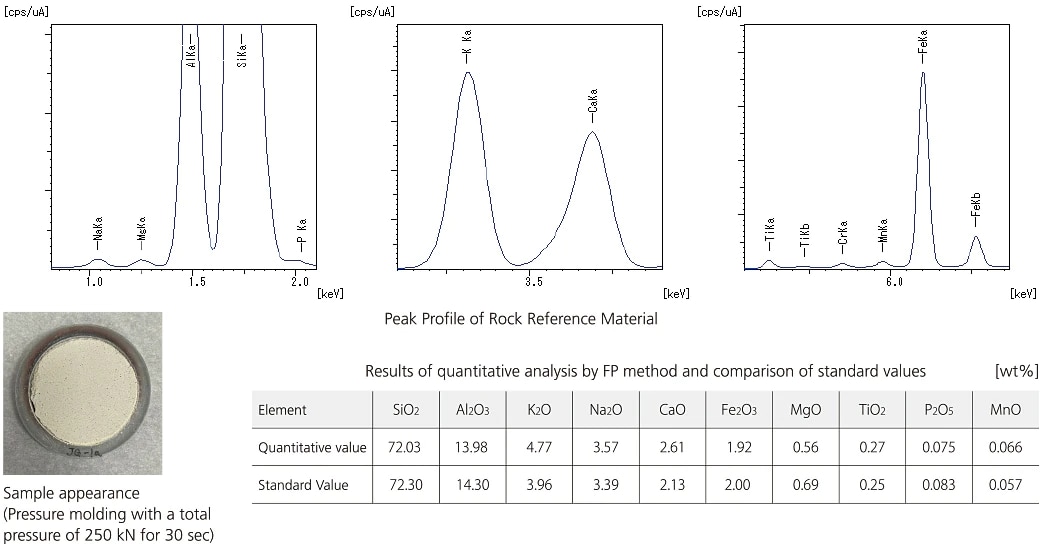
Liquid, Slurry and Emulsion -Heavy Elements in Waste Oil-
To measure a liquid sample, simply add it to a sample cell with film on the bottom. This method is effective for the detection and quantitation of additive components and worn metals in aqueous solutions, organic solvents, or oils.
As shown below, the system achieves adequate detection of heavy elements in waste oil at ppm levels.
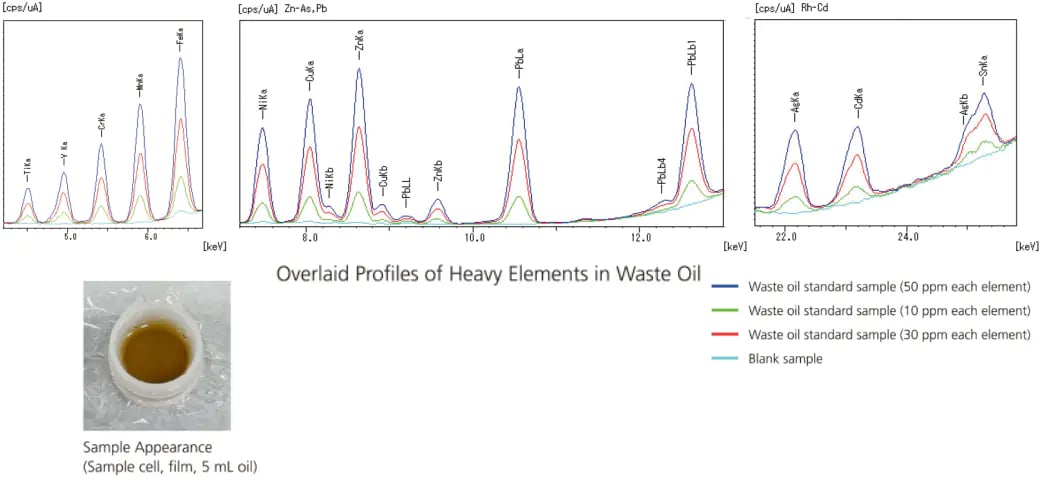
Foreign Matter Material Evaluation -Foreign Matter Adhering to Plastic Extruded Part-
EDX permits non-destructive elemental testing, making it effective for the analysis of foreign matter adhering to or mixed in with foods, drugs, or products. Using the sample observation camera and collimators makes it easy to identify trace foreign matter.
The 1 mm irradiation diameter is effective at reducing the effects of peripheral material, resulting in accurate quantitative matching. In the example, the material was identified as SUS316.
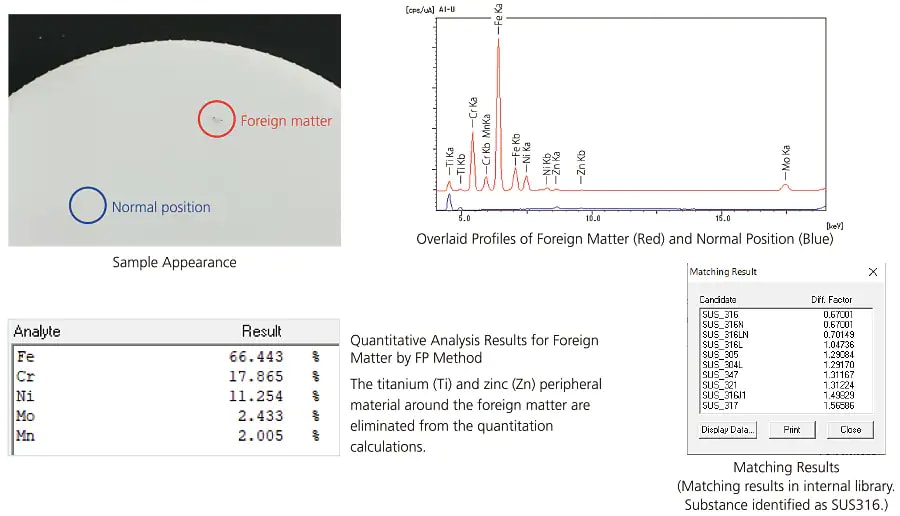
Residual Catalyst -Analysis using Scattered Radiation Correction-
EDX is also useful for testing residual catalysts. For quantitative analysis of residual catalysts during organic synthesis, ICP analysis is often used.
However, pretreatment is cumbersome and it takes time to obtain results. EDX makes quantitative analysis easy.
The following is an example of quantitative analysis of Pd in organic matter (cellulose) using a calibration curve prepared with a standard Pd aqueous solution. By using the standard correction in the scattering line, the difference between the material of water and cellulose is corrected. Furthermore, the quantitative result is equivalent to the case of the sufficient quantity even if the sample quantity is small.
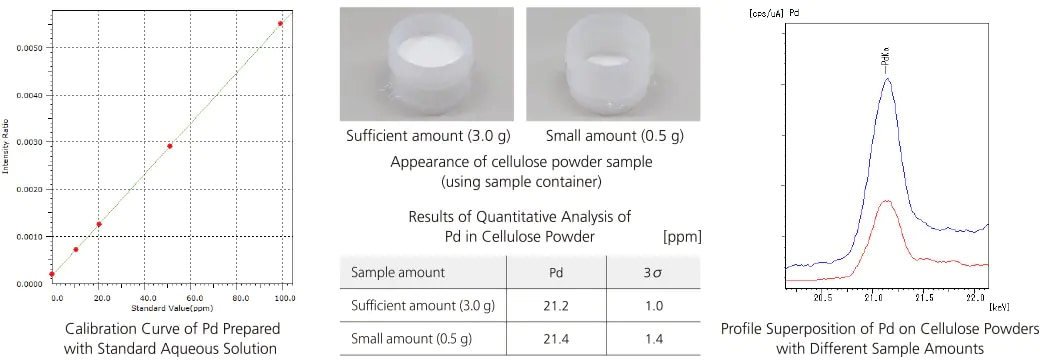
ーScreening Analysis of Phosphorusー
Phenol and isopropyl phosphoric acid (3:1) (PIP (3:1)) are widely used in products such as polyvinyl chloride (PVC) and polyurethane to provide plasticity and flame retardancy. Meanwhile, the U.S. Environmental Protection Agency (U.S. EPA) has begun to regulate the manufacture, processing and commerce of products and articles containing PIP (3:1) under the Toxic Substances Control Act (TSCA).
For this regulation, EDX is capable of screening and analyzing the content of PIP (3:1), a phosphorus compound, at phosphorus concentrations.
With the use of an optional vacuum measurement unit, analysis can be performed with even higher sensitivity.
* EDX detects as total phosphorus, not only from PIP(3:1).
If phosphorus is detected, GC/MS can help determine whether the phosphorus is derived from PIP(3:1).
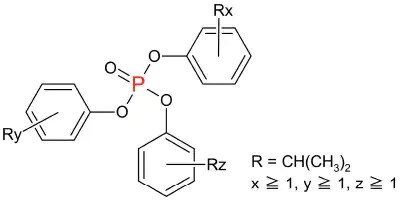
PIP(3:1) Structural Formula
-
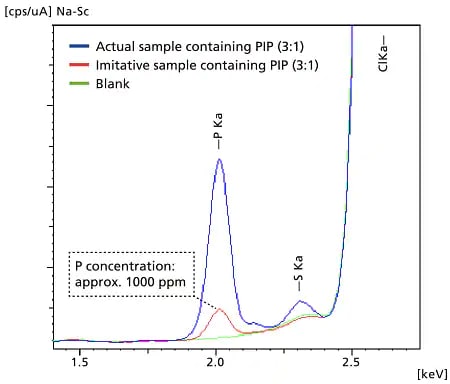
Profile Superposition of Sample Containing PIP(3:1) and Blank
*The imitative sample containing PIP(3:1) is prepared by adding PIP(3:1) to petroleum ether so that the concentration of phosphorus (P) is 1000 ppm. In addition, PVC is assumed as the material and chlorinated paraffin is added to mix chlorine (Cl).
-
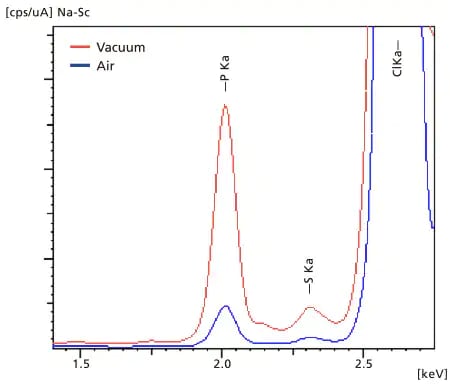
Profile Superposition of Vacuum and Atmosphere Measurements of Actual samples Containing PIP
ーThickness and Composition Measurement of Electroless Ni-P Plating Filmsー
The thin-film FP method can be used to measure the thickness of multilayer films or simultaneously quantify the thickness and composition of films.
The following shows an example of quantifying the 4.8 µm thickness of a plating film and the concentration of its principal components Ni and P. Trace quantities of Pb were also detected.
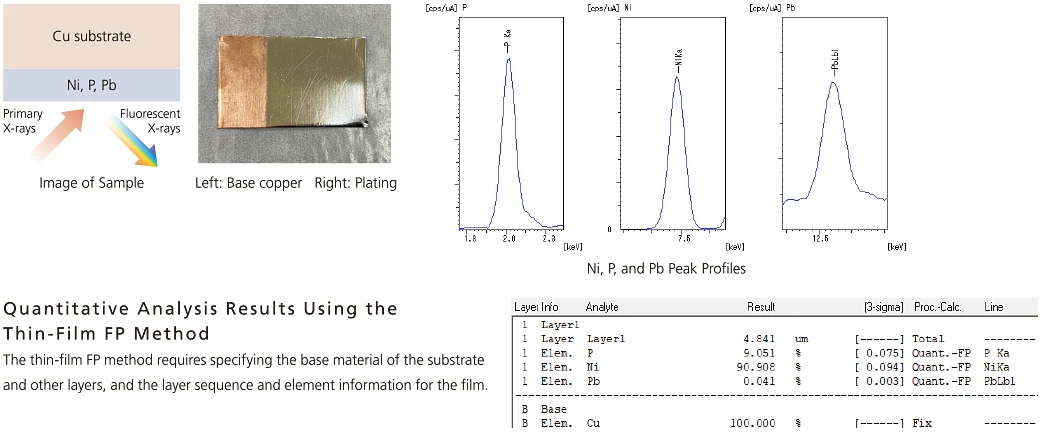
Plating, Thin Films -Thickness Measurement of Plating on Irregular Shaped Sample-
EDX performs measurement of plating thickness without any standard sample using the thin-film FP method. However, quantitative errors can increase in irregular-shaped samples because the thin-film FP method assumes samples have a flat surface condition. New features with the background FP method enable measurement of plating thickness with less error in irregular-shaped samples, such as a shaft portion of the screw. An example of the thickness measurement of galvanized screws is shown below.
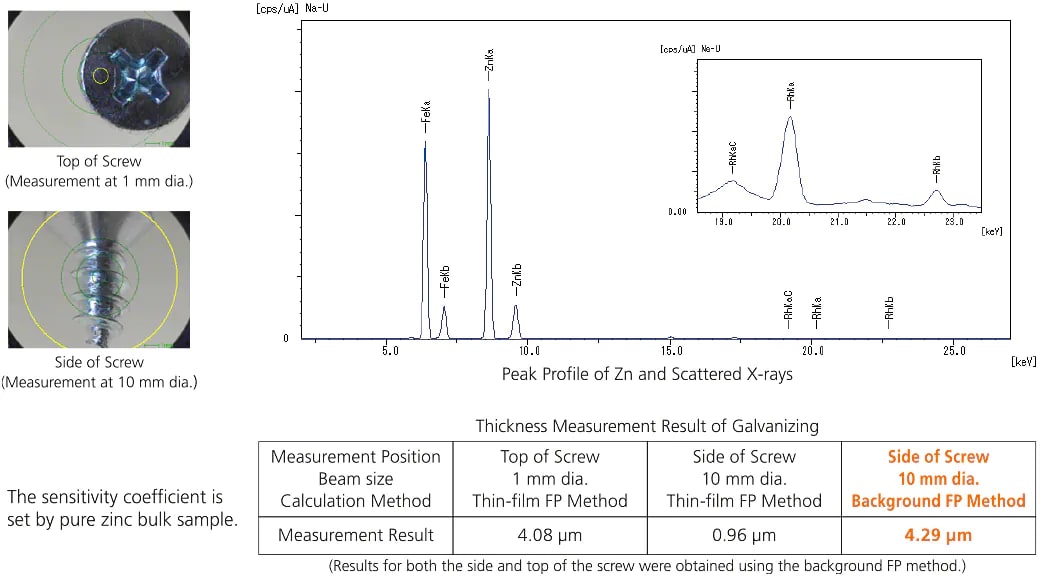
Sample Preparation
Solid Samples

- Pretreatment of metal samples
To enhance the quantitation precision for metal samples or to eliminate the effects of contamination or oxidation on the sample surface, machine and polish the sample surface with a lathe and rotary polishing machine. -

Liquid Samples

Powder Samples
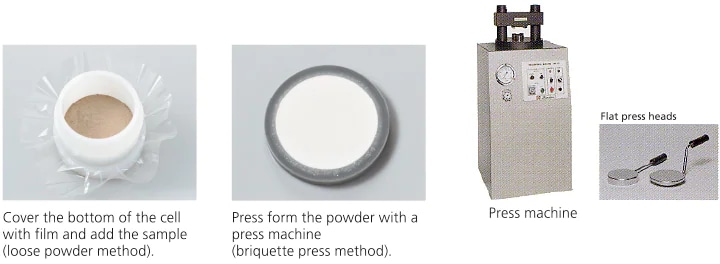
-
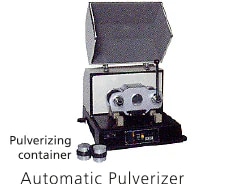
Pulverizing Samples
Pulverize samples with coarse particle sizes, or samples subject to effects of non-uniformity of mineral particles on the analysis surface. -
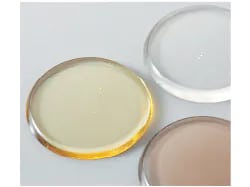
Glass Bead Method
The glass bead method provides highly accurate analysis of oxide powders, such as rock. The sample is glassified using a flux such as Li2B4O7.


